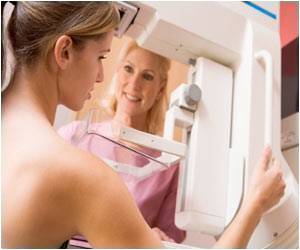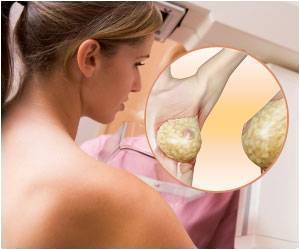The American Cancer Society previously recommended women be screened each year from age 40, but it changed its advice because of lack of evidence.

‘US guidelines urge women in the age of 50 years and older to get a mammogram every two years as it benefits them more than doing harm.’





The new guidance accounts for the latest scientific data on the potential harms -- such as over-diagnosis, false-positives and benign biopsies -- of screening using digital mammography. It also takes into account knowledge about molecular subtypes of cancer as well as how breast density plays into risk. "Mammography screening every two years for average-risk women ages 50 to 74 offers a favorable balance of benefits to harm," said the guidelines.
However, lead investigator Jeanne Mandelblatt of Georgetown Lombardi Comprehensive Cancer Center cautioned that "it's important to remember that none of us is the 'average' woman" and that family history and other risk factors must be considered.
”The bottom line is that mammography saves lives.When to start screening and how often to undergo mammography is a personal decision. No model can provide those answers," she added.
Experts' concerns
Advertisement
"While the new guidelines still state women in their 40s can go forward with mammograms, they suggest that mammograms are not required. Unfortunately many women will take this as a signal that mammograms are not beneficial," said Stephanie Bernik, chief of surgical oncology at Lenox Hill Hospital in New York.
Advertisement
"They also concluded that mammography starting at age 40 saves more lives than mammography starting at age 50," said Vincoff, who like Bernik was not involved in the research.
"Women need to understand that if they start having mammograms later, they risk having a cancer that is detected at a more advanced stage, which may require more extensive treatment or which may no longer be curable."
The latest guidelines come on the heels of the American Cancer Society's recommendations issued in October 2015, which urged women to wait until the age of 45 before getting an annual mammogram to screen for breast cancer.
The American Cancer Society previously recommended women be screened each year from age 40, but said it changed its advice because evidence failed to show enough lives were being saved.
Screening statistics
For the task force guidelines, research was led by the Cancer Intervention and Surveillance Modeling Network (CISNET), and funded by the National Cancer Institute.
Researchers considered screening strategies starting at age 40, 45 or 50, with one- or two-year intervals between screening exams. The recommendations, based on a review of new research, are the same as those issued by the group in 2009.
They say screening earlier or more often "prevented a small number of additional deaths, but also caused a larger number of false positive mammograms and benign biopsies, and led to more over-diagnosis and over-treatment."
Overall, the likelihood of a woman getting breast cancer in her life from age 40 to 100 is 12.9 percent, the report said.
Among women 50-74, screening every two years "achieves a median 25.8 percent breast cancer mortality reduction -- averting seven breast cancer deaths per 1,000 women screened," the report said.
The strategy also "leads to 953 false positives and 19 over-diagnosed cases." Over-diagnosed cancer implies the discovery of a small tumor that might not be life-threatening.
When women in their 40s are added to the equation, screening every two years "averts one more death per 1,000 from breast cancer and generates 576 more false positive tests."
Source-AFP














